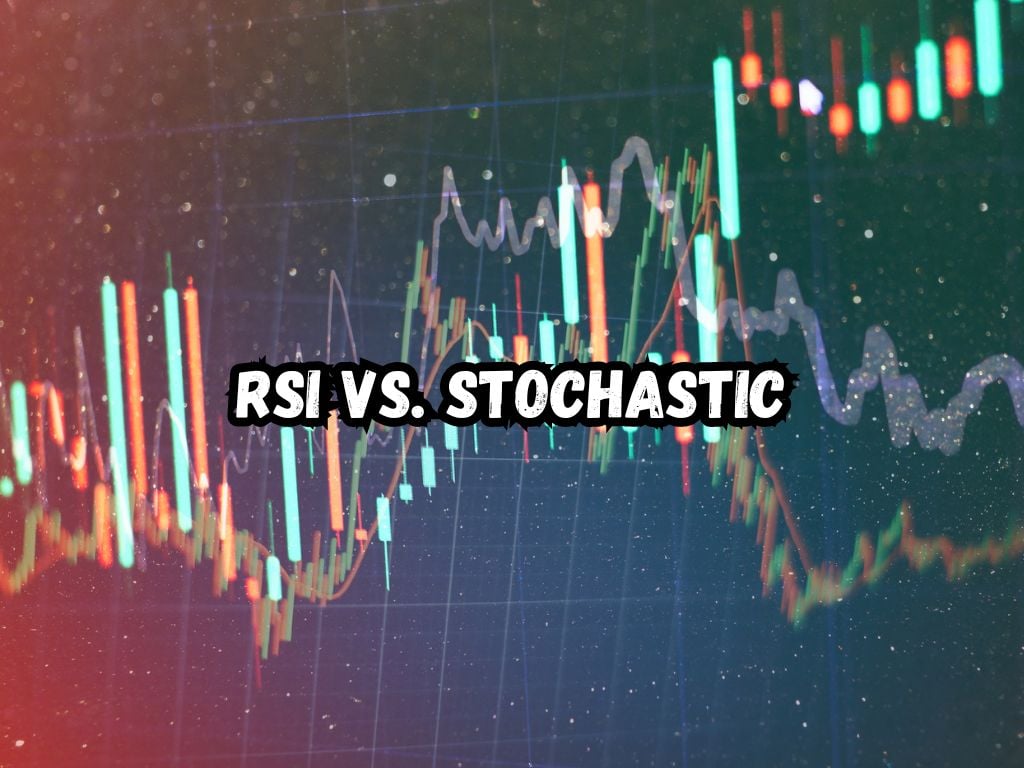In the dynamic world of trading, the selection of the right technical indicator can significantly impact decision-making and ultimately, trading performance.
Among the myriad of tools available, the Relative Strength Index (RSI) and Stochastic Oscillators stand out. These indicators, though serving a similar purpose, differ in their operational essence and application.
This article dives deep into comparing RSI vs Stochastic, aiming to equip traders with the knowledge to choose the one that best fits their trading strategy.
Understanding RSI and Stochastic Oscillators
RSI, short for Relative Strength Index, is a momentum oscillator that measures the speed and change of price movements. Created by J. Welles Wilder Jr., it oscillates between zero and 100.
Traditionally, an asset is deemed overbought when the RSI exceeds 70 and oversold when it drops below 30.
The Stochastic Oscillator, developed by George C. Lane in the late 1950s, is another momentum indicator. It compares a particular closing price of an asset to a range of its prices over a certain period.
The value of the stochastic oscillator moves between 0 and 100, similar to RSI. Overbought and oversold conditions are identified above 80 and below 20, respectively.

The Mechanics Behind RSI and Stochastic
The calculation of RSI involves average gains and losses over a 14-day period, simplifying to:
RSI = 100 – (100 / (1 + (Average Gain / Average Loss)))
The indicator then provides insights into the internal strength or weakness of an asset’s price movement.
On the other hand, the Stochastic Oscillator uses a different approach:
%K = (Current Close – Lowest Low)/(Highest High – Lowest Low) * 100%D = 3-period moving average of %K
It focuses on the location of the closing price in relation to the high-low range over a set period, presenting the momentum of the price movement.
Strengths and Limitations of RSI
The RSI’s primary strength lies in its simplicity and the clear signals it provides, particularly in identifying overbought and oversold conditions.
It helps traders identify potential reversal points in the market. However, its limitations emerge in sideways markets, where fluctuations can lead to misleading signals and potential losses if solely relied upon.
Strengths and Limitations of Stochastic Oscillator
The Stochastic Oscillator excels in its ability to adjust to market speed and volatility. It’s capable of providing signals even in fluctuating markets, offering insights into potential reversal points by focusing on price momentum.
Its downside, however, includes the risk of generating false signals in strong trending markets, complicating the decision-making process.
Comparative Analysis of RSI vs Stochastic
When directly comparing these indicators, it’s evident that while both aim to identify potential entry and exit points by assessing overbought and oversold conditions, they do so in slightly different market scenarios.
The RSI offers better performance in markets with clear trends, providing reliable signals. Conversely, the Stochastic Oscillator thrives in volatile markets with its sensitivity to immediate price movements, albeit with a higher risk of false positives.
Timeframe considerations also come into play, with the RSI typically employed on a 14-day period, offering a more smoothed-out outcome.
The Stochastic Oscillator, with its focus on recent closing prices relative to previous highs and lows, can be adjusted for shorter timeframes, making it more reactive.
Combining the Two
A prudent strategy involves using both indicators in tandem to mitigate their respective drawbacks.
By waiting for both RSI and Stochastic to indicate an overbought or oversold condition, traders can filter out noise, increasing the reliability of the signals.
The key lies in confirming signals across both indicators before making a trade decision, reducing the chances of acting on false signals.

Making the Choice
The choice between RSI and Stochastic oscillators hinges on several factors, including market conditions, personal trading style, and risk tolerance.
Traders favoring markets with clearer trends might lean towards RSI for its straightforward signals.
Those operating in fast-paced, volatile markets could find the sensitivity of the Stochastic Oscillator more beneficial.
Practical Tips and Best Practices
Implementing these indicators effectively requires practice and continuous learning. Start with paper trading to understand how these indicators respond to different market conditions.
Always look for confirmation from other sources and avoid making decisions based on a single indicator.
Keeping an eye on broader market trends can also offer context, improving the accuracy of your trading signals.
Frequently Asked Questions
What is the main difference between the RSI and Stochastic oscillator?
The main difference lies in their approach. RSI measures the speed and change of price movements, while Stochastic compares the closing price to its price range over a certain period.
Can RSI and Stochastic be used for all types of markets?
Yes, both indicators can be used in various markets. However, their effectiveness may vary with market conditions. RSI is more suited for trending markets, while Stochastic favors volatile market environments.
Is RSI or Stochastic better for beginner traders?
Both indicators are valuable, but RSI’s simplicity might be slightly more accessible for beginners to grasp and interpret.
How often should RSI and Stochastic signals be trusted?
While both indicators can provide valuable signals, they are not foolproof. It’s crucial to use them as part of a broader trading strategy, incorporating other analysis tools for confirmation.
Conclusion
While both RSI and Stochastic oscillators serve to aid traders in identifying potential trading opportunities, understanding their nuances, strengths, and limitations is crucial.
By appreciating the subtle differences, traders can make informed decisions, aligning their strategies with the indicators that best suit their trading style and the market dynamics at play.
By adopting a balanced approach and validating indicator signals with broader market analysis, traders can enhance the effectiveness of their strategies and navigate the complexities of the market with greater confidence.


 Tags:
Tags:










